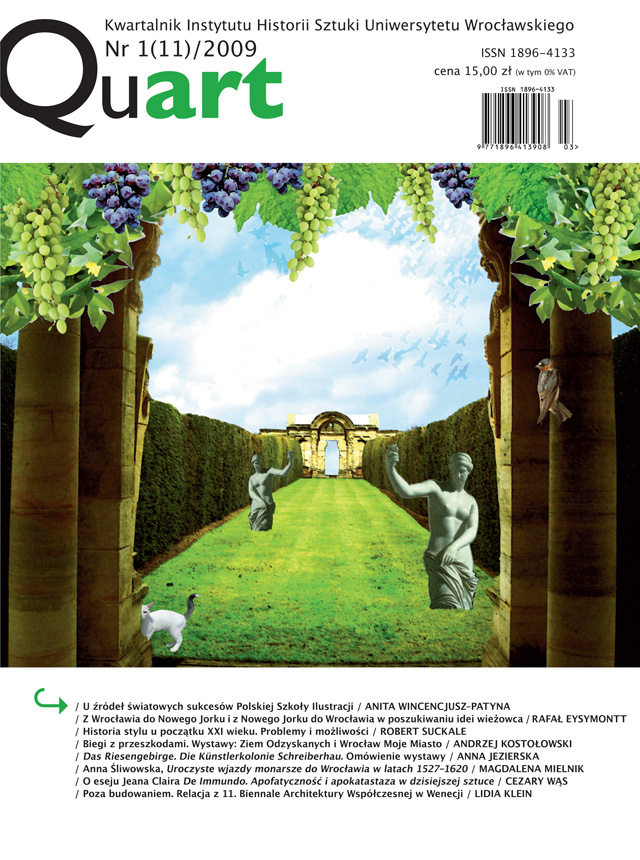U źródeł światowych sukcesów Polskiej Szkoły Ilustracji
At the Source of the Global Success of the Polish School of Illustration
Author(s): Anita Wincencjusz-PatynaSubject(s): Fine Arts / Performing Arts, Visual Arts, History of Art
Published by: Wydawnictwo Uniwersytetu Wrocławskiego
Summary/Abstract: Polish book illustration for children has a long, rich tradition of almost two hundred years now. However, the decades 1950-1980 seem to be of a unique significance for its artistic development, present situation and worldwide recognised quality, certified by numerous successes in international competitions and exhibitions of book design. That is precisely when book illustration, together with poster design, reached an extremely high quality and artistic value, soon becoming a renowned Polish speciality. The author describes the qualities deciding such a high level of Polish book art, resulting in creating the term ‘Polish Illustration School’. In the early 1950s a huge wave of new creative force of young illustrators with excellent skills joined the older colleagues, who had been continually active after World War II. All of them took advantage of propitious situation on publishing market, connected with strong state patronage, winning an enthusiastic reception of home audience. Thanks to that Poland stepped onto the international stage triumphantly at the end of the decade. In the years 1960s and 1970s Polish book illustration was regularly present at all the most important international competitions: Bratislava, Brno, Bologna, Padua, Frankfurt-on-Main, Moscow, São Paulo. Since 1965 UNESCO indicated Poland as a model country in the field of art for children, especially book illustration. The freedom of creation derived also from the so-to-speak safe matter of artistic activity: poetry, fairy tales, fables, children’s stories, unreal worlds and wildlife seemed to lack the ideological burden, being as distant as possible from the reality of Poland of the period 1950-80. The first common feature of Polish book illustration is its unusual variety, effecting undoubtedly from artistic independence. The range of artistic temperaments and preferred styles and sources of inspirations seems to be infinite. Another feature is a great freedom of graphic expression, not rarely aiming to clear painterly effects, also to be found in Polish posters, film and stage set, being a distinguishing element of the so-called Polish style. The painterly elements came forward as the biggest value of the whole book design. The artists also benefited from folk art with its simple expressive forms, bright colours, straight humour. Polish illustration lacks infantility, bending down to the level of easy didactic message and oversweeten aesthetics of kitsch. The article mentions: Butenko, Gaudasińska, Grabiański, Kilian, Majchrzak, Mróz, Murawscy, Rechowicz, Rychlicki, Siemaszko, Srokowski, Stanny, Strumiłło, Szancer, Wilbik, Wilkoń, Witkowska, Witwicki among others.
Journal: Quart
- Issue Year: 11/2009
- Issue No: 1
- Page Range: 3-29
- Page Count: 27
- Language: Polish

